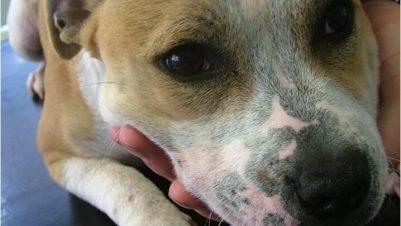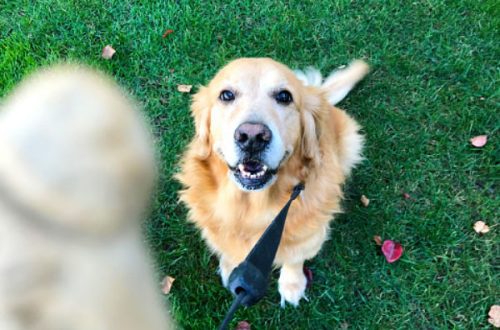
Lichen in dogs: types, symptoms and treatment
Lichen is a dangerous skin disease that can infect both humans and animals. There are several varieties of lichen, but their main symptoms are similar: the hair falls out on the affected areas, forming inflamed and/and flaky itchy bald spots. About the reasons for the appearance and how to take care of a sick pet – in this article.
The causative agents of this disease are microscopic dermatophyte fungi. They settle in the stratum corneum of the skin, in the hair, claws and nail plates, where they feed on keratin. If the carrier’s immune defenses are weakened, the fungi actively multiply and disrupt the normal functioning of the skin. Other risk factors are lack of vitamins in the diet, long hair, young or old age of the dog, frequent stress, pregnancy and lactation, skin diseases, metabolic disorders, chemotherapy.
Contents
What does ringworm look like on a dog
- First, rashes appear on the face or paws, which often go unnoticed. In this case, the dog may become lethargic and lethargic.
- Then, on the affected areas, the hairs break and fall out, forming bald spots or areas with sparse and short hair.
- Severe itching begins: the pet rolls on the floor, scratches or licks the affected part of the body all the time.
- The skin on the bald spots changes color, becomes inflamed, peels off or becomes wet. Nodules, abscesses and crusts appear.
- If the lichen affects the claws, then they exfoliate and change their shape.
If a pet has at least one of the above signs of lichen in a dog, you need to isolate it from family members and other animals, and then contact your veterinarian.
How to cure ringworm in a dog
A sick dog spreads fungus spores indoors and outdoors, which can be dangerous for people and animals with weakened immune systems. In addition, constant scratching of itchy bald spots can lead to infection with other dangerous infections and even death of the animal.
Lichen cannot be treated on its own, because fungal infections are easily confused with allergic skin reactions. The veterinarian will examine the pet, take crops from bald areas, make an accurate diagnosis and prescribe the necessary medicine. This may include an antifungal remedy for lichen in dogs, antihistamines, healing ointments, and medicines for itching. Proper treatment will help your four-legged friend recover quickly.
Types of lichen in dogs
Only two types of lichen are true dermatophytosis: ringworm and pityriasis, or multi-colored. They are caused by a fungal infection and require appropriate treatment. Pink and weeping lichen are allergic in nature.
1. Ringworm in dogs
- Symptoms: rounded bald spots with a diameter of about 2 cm with a clear contour, pink or brownish spots, itching.
- Pathogens: fungi Microsporum and Trichophyton. Hence the other names for ringworm are microsporia and trichophytosis.
This type of lichen is the most common because fungus spores can survive in the soil for up to three months, and on furniture and carpets for many years.
2. Pityriasis versicolor in dogs
- Symptoms: Bald spots of various shades of pink and brown, with uneven contours. Bald areas are covered with scales and rapidly spread throughout the body.
- Pathogen: A yeast fungus that is part of the normal microflora of the skin, but begins to multiply and corrode the skin when the skin is damaged and the immune response is weak.
This type of lichen is also known as varicolor because of the patches of various colors.
3. Pityriasis rosea in dogs
- Symptoms: bald areas of pink color, which change color to yellow and become covered with a crust.
- Pathogen: not known exactly, but probably herpesvirus.
This type of lichen is an allergic reaction to an infection. Appears in animals with a genetic predisposition and weak immunity, is not fully cured. Can spread rapidly throughout the dog’s body, but is not contagious.
4. Weeping lichen in dogs
- Symptoms: Hot and swollen bald spots on the coat that turn into blisters with fluid and pus.
- Exciter: no.
Weeping lichen is eczema caused by a reaction to medications, food ingredients, or other allergens. It is not contagious to humans and animals.
How to protect your pet from lichen
To minimize the risk of infection, we deprive the owner must follow a few simple rules:
- provide your pet with a nutritious diet;
- avoid contact with stray animals;
- use an antifungal shampoo regularly;
- do not allow the dog to eat from other people’s bowls or sleep on other people’s bedding;
- treat all diseases of the pet in time;
- get vaccinated against ringworm.
Ringworm is not the only reason why a dog may lose hair. All common causes are explained by Hill’s veterinarians in this article.





